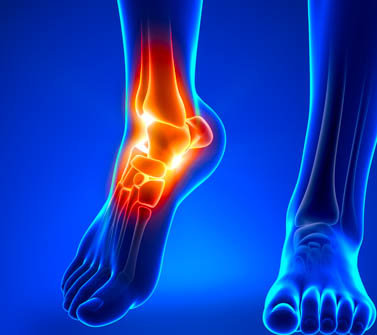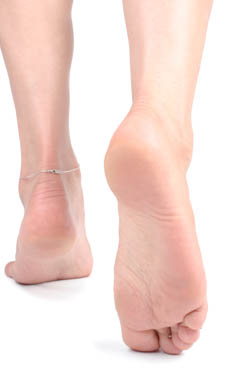Researchers from the Nanning Hospital of TCM (Traditional Chinese Medicine) investigated the efficacy of warm needle acupuncture combined with external herbal compresses for the treatment of sports related ankle injuries.
 The research team also investigated the efficacy of electroacupuncture for the treatment of ankle injuries. Warm needle acupuncture combined with herbal compresses achieved a 95% total effective rate and electroacupuncture achieved a 76.7% total effective rate for the treatment of ankle injuries.
The research team also investigated the efficacy of electroacupuncture for the treatment of ankle injuries. Warm needle acupuncture combined with herbal compresses achieved a 95% total effective rate and electroacupuncture achieved a 76.7% total effective rate for the treatment of ankle injuries.A total of 120 patients with sports related ankle injuries participated in the randomized controlled study. Both electroacupuncture and warm needle acupuncture patients were treated five days per week. Assessments were made after week one and week four of the treatment regimen.
Warm needle acupuncture was applied to the following acupoints:
- Ah Shi
- SP6 (Sanyinjiao, 3 Yin Intersection)
- SP5 (Shangqiu, Shang Mound)
- KD2 (Rangu, Blazing Valley)
- GB34 (Yanglingquan, Yang Mound Spring)
- GB41 (Zulinqi, Foot Governor of Tears)
- BL62 (Shenmai, Extending Vessel)
- LV3 (Taichong, Great Rushing)
- BL60 (Kunlun, Kunlun Mountains)
- GB40 (Qiuxu, Mound of Ruins)
- KD3 (Taixi, Supreme Stream)
- KD6 (Zhaohai, Shining Sea)
Warm needle technique was achieved using 1 cm moxa pieces that were attached to the needles and subsequently ignited. Total treatment time per acupuncture session was thirty minutes and one acupuncture treatment was applied per day. For the electroacupuncture group, similar acupoints were needled.

The herbal compress was called the meridian vitalization and numbness removal formula (Huo Luo Zhi Bi). The herbal compress consisted of the following herbs:
- Sheng Di Huang, 20 g
- Rou Cong Rong, 20 g
- Bai Ji Tiang, 15 g
- Du Zhong, 12 g
- Liang Mian Zhen, 15 g
- Gu Sui Bu, 12 g
- Shen Jin Cao, 15 g
- Wei Ling Xian, 12 g
- Shi Da Gong Lao Ye, 12 g
- Chuan Xiong, 15 g
- Qiang Huo, 10 g
- Zhi Cao Wu, 10 g
- Xu Duan, 15 g
- Ma Qian Zi, 4 g
- Hong Hua, 15 g
- Zhi Chuan Wu, 10 g
- Fu Zi, 6 g
- Ji Xue Teng, 15 g
- Xi Xin, 4 g
- Xue Jie, 10 g
Improvements were measured in relation to reductions in ankle pain and swelling. Additionally, progress was documented by improvements in walking abilities. Warm needle acupuncture combined with herbal compresses outperformed electroacupuncture with a 95% total effective rate compared with a 76.7% total effective rate. Both forms of acupuncture proved safe and effective for the treatment of sports related ankle injuries.
The researchers noted that Li et al. had demonstrated the efficaciousness of distal acupuncture combined with acupressure as an effective tool for the treatment of ankle injuries in prior research. The results showed that acupuncture relieved pain and swelling while simultaneously improving range of motion. The new research at the Nanning Hospital of TCM is consistent with the findings of Li et al.
References:
Yue, J., Mo, Z. Z., Yue, Y. Q. & Chen, J. J. (2015). Clinical Observation of Warm Acupuncture Therapy Combined with External Application of Chinese Medicine in the Treatment of Acute Sports-induced Ankle Injury. Journal of Clinical Acupuncture and Moxibustion. 31(2).
Li, Y. S., He, S. Q. & Tian, C. H. (2001). Clinical Research on Regional and Distal Acupoint Selection for the Treatment of Acute Ankle Sprain. Journal of Clinical Acupuncture. 17(11): 19-22.
Lin, X. H. (2008). Warm Acupuncture Treatment for Calcanodynia: 70 cases. Journal of Fujian Traditional Chinese Medicine. 39(1): 34.
Zhen, F. & Chen, S. Y. (2000). Functional Joint Instability and Body Sensory Restoration. Chinese Journal of Sports Medicine. 19(1): 65-68.

No comments:
Post a Comment